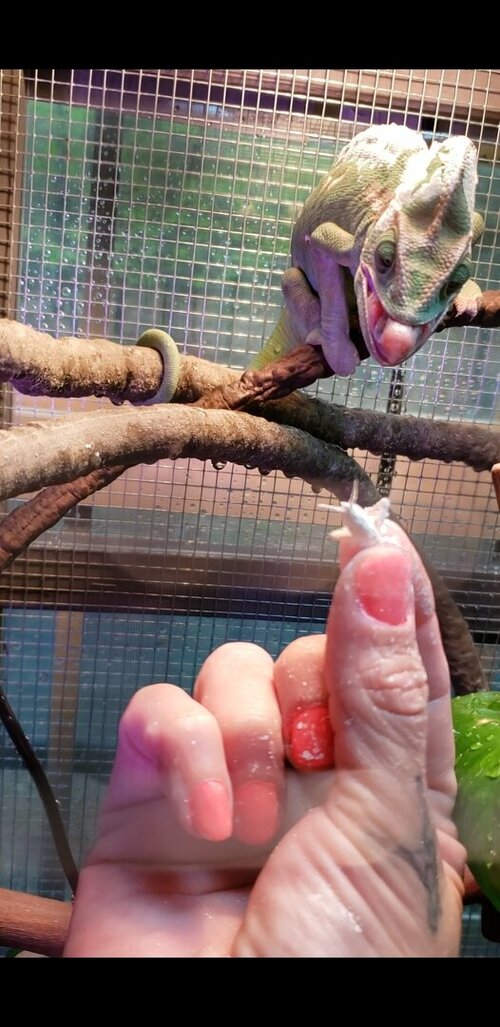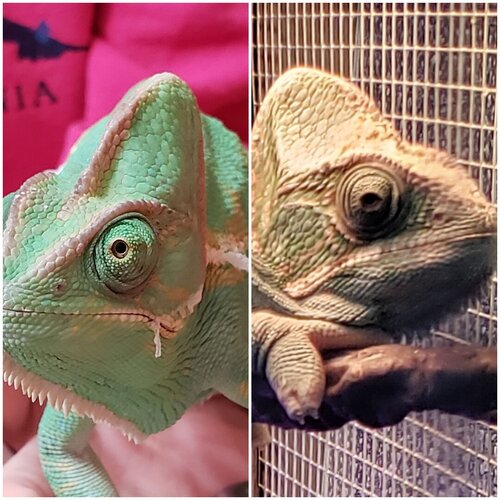PrincessSpaz
Established Member
About 2 months ago I was repotting Spaz's pothos and located 31 eggs (about the size of jelly beans, felt like jelly beans, off white in color)
We never saw her hide or anything before locating the eggs. She seemed to be ok, a little hungrier than usual but otherwise normal. I figured out later on why she was hungry.
Fast forward to two days ago ... she's been taking up 1/3 of my daughter's room as her free roaming space since scraping her head on the frame of her enclosure. We left the door open in case she felt like going inside but she hadn't shown any interest in being in there. Wednesday, she went missing. We couldn't find her anywhere ... finally heard her (thank goodness we hadn't checked her old enclosure yet)
A little over 24 hours later, I find a very sandy and hungry girl. She had been in her sand box the whole time... got her bin out today and she had indeed laid more eggs ... she's been to the vet twice in the last couple months and according to the last x-ray she had not retained any eggs from when she laid in her pothos pot
I'm currently caring for a male veiled on a temporary basis. Priss pot cannot see him or his enclosure (they're in different rooms) but Spazzy seems to know he's here (she went from being a spicy girl to wanting to climb on us all the time, at first I thought she could have somehow sensed I'd had surgery and was concerned for me but now I'm thinking that wasn't it) ... could his presence have triggered her somehow??? Even if they're in different rooms? We were thinking of keeping him ... should she stay upstairs and I move him downstairs?
I'm so confused lol
My girl seems to be doing really good, she's been wanting crickets over dubias but eating/drinking well and snacked on a few hornworms
We never saw her hide or anything before locating the eggs. She seemed to be ok, a little hungrier than usual but otherwise normal. I figured out later on why she was hungry.
Fast forward to two days ago ... she's been taking up 1/3 of my daughter's room as her free roaming space since scraping her head on the frame of her enclosure. We left the door open in case she felt like going inside but she hadn't shown any interest in being in there. Wednesday, she went missing. We couldn't find her anywhere ... finally heard her (thank goodness we hadn't checked her old enclosure yet)
A little over 24 hours later, I find a very sandy and hungry girl. She had been in her sand box the whole time... got her bin out today and she had indeed laid more eggs ... she's been to the vet twice in the last couple months and according to the last x-ray she had not retained any eggs from when she laid in her pothos pot
I'm currently caring for a male veiled on a temporary basis. Priss pot cannot see him or his enclosure (they're in different rooms) but Spazzy seems to know he's here (she went from being a spicy girl to wanting to climb on us all the time, at first I thought she could have somehow sensed I'd had surgery and was concerned for me but now I'm thinking that wasn't it) ... could his presence have triggered her somehow??? Even if they're in different rooms? We were thinking of keeping him ... should she stay upstairs and I move him downstairs?
I'm so confused lol
My girl seems to be doing really good, she's been wanting crickets over dubias but eating/drinking well and snacked on a few hornworms






